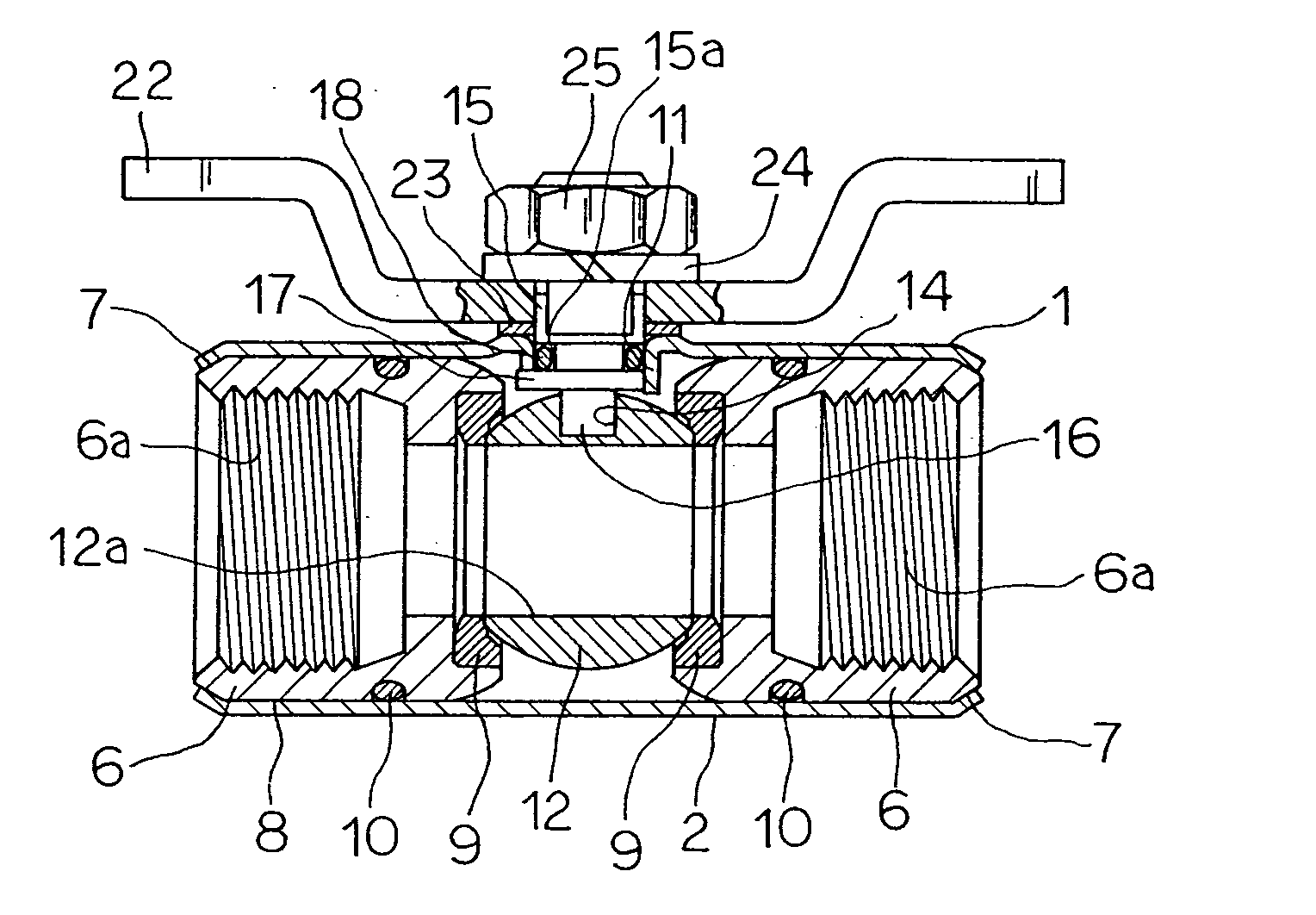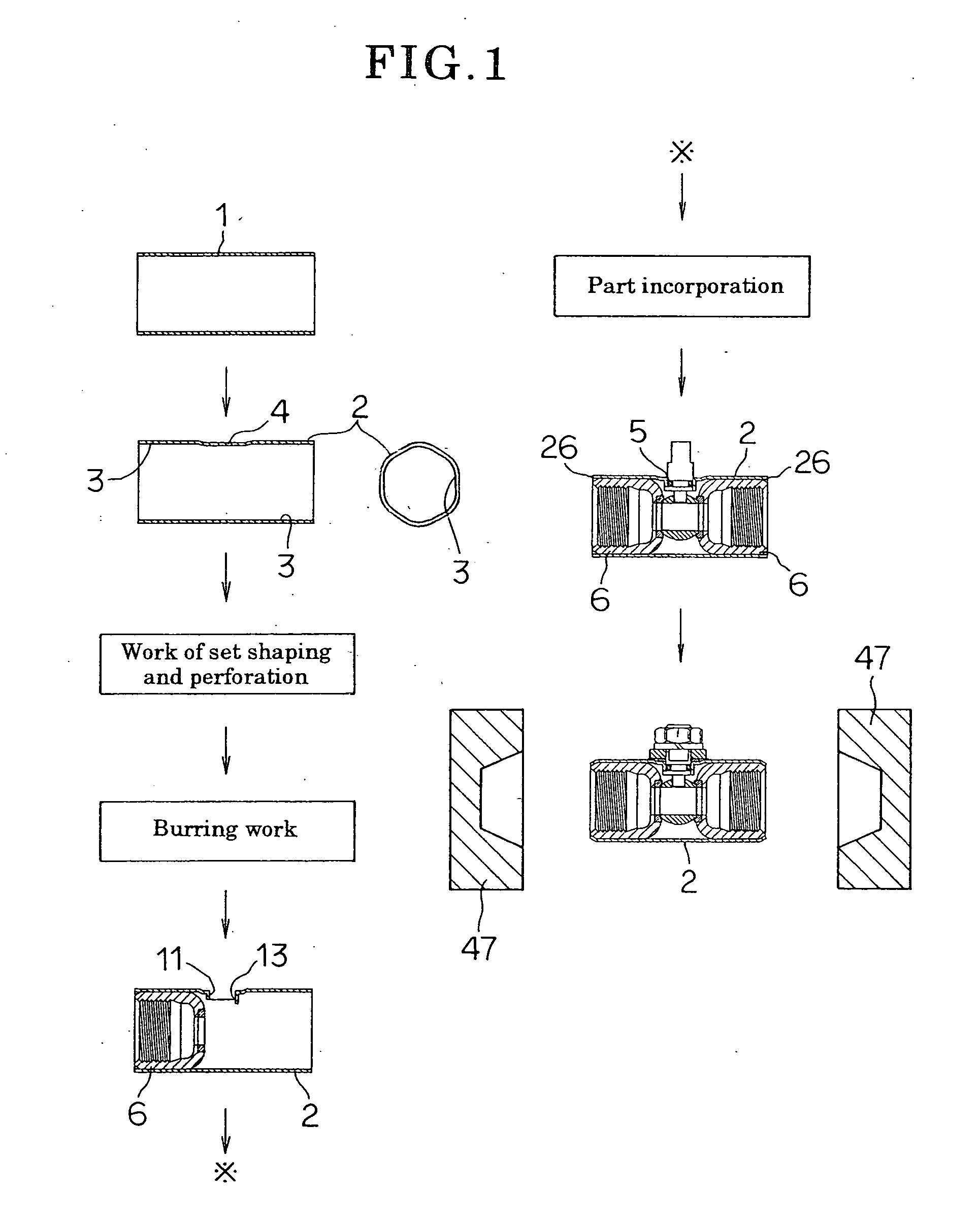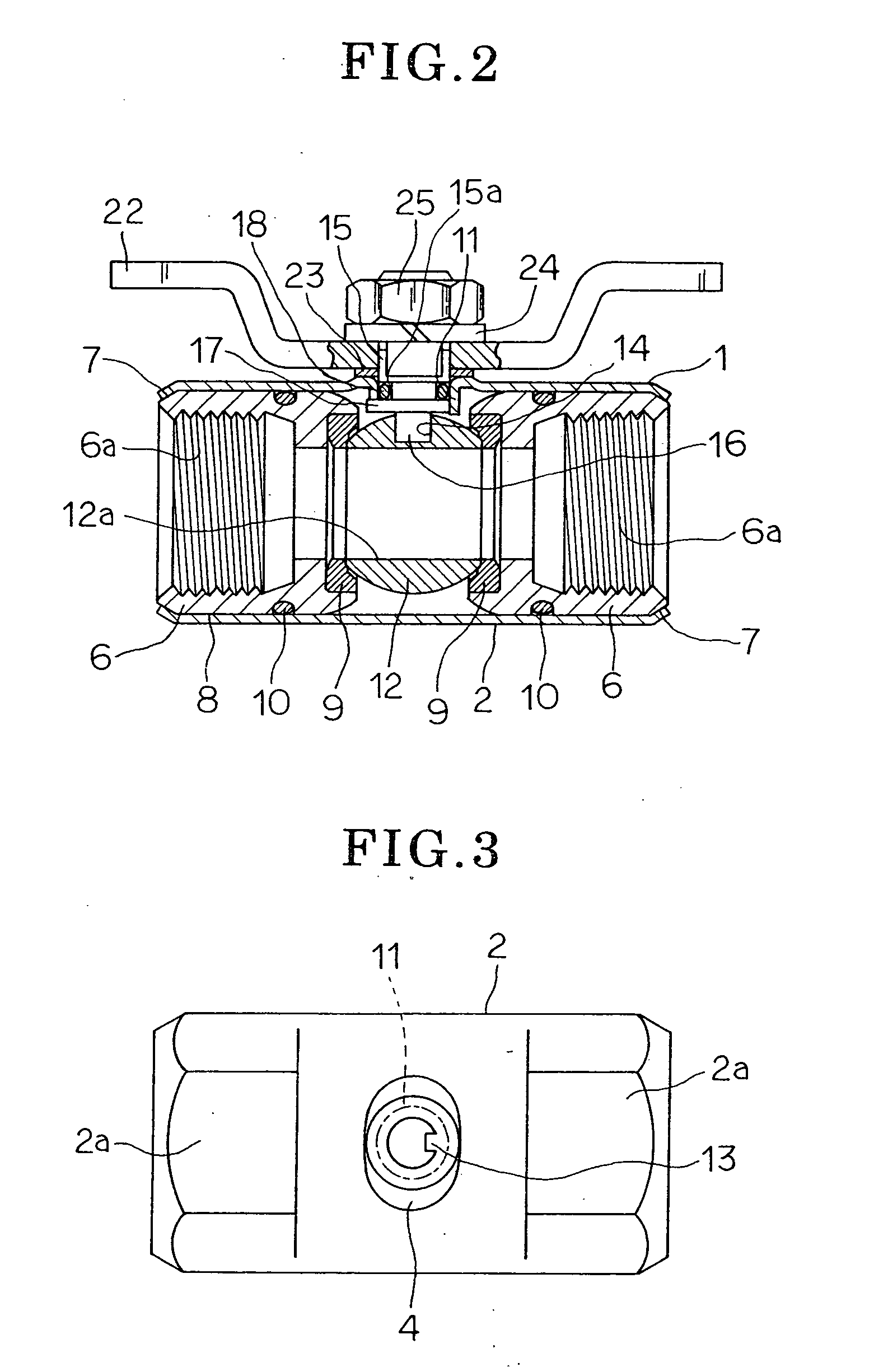Ball valve and method for production thereof
a technology of ball valve and ball valve body, which is applied in the field of ball valve, can solve the problems of high production cost, high material cost, and high process cost of ball valve, and achieve the effects of reducing production cost, simple construction, and increasing accuracy
- Summary
- Abstract
- Description
- Claims
- Application Information
AI Technical Summary
Benefits of technology
Problems solved by technology
Method used
Image
Examples
Embodiment Construction
[0060] This invention will be described more specifically below with reference to the accompanying drawings. For purposes of this description, the term “inner” means closer to the center of the valve with respect to a central axis of the valve body (i.e., the axis along which flow occurs), while “outer” means farther from the center of the valve.
[0061]FIGS. 1 through 10 are intended to illustrate a method for the production of a ball valve as contemplated by the first aspect of this invention.
[0062] In the diagrams, reference numeral 1 denotes a pipe. This pipe 1 is a thin-wall (non-thick-wall) type seamless pipe of copper alloy or stainless steel. Otherwise, it may be a seamed pipe 1 produced by shaping a steel plate in the form of a roll and then converting the roll into a cylinder by joining the opposed edges of the roll as by welding. A body 2 of a ball valve is formed by cutting a predetermined length of this pipe 1, namely the length of a prospective valve box of a ball valv...
PUM
| Property | Measurement | Unit |
|---|---|---|
| angle | aaaaa | aaaaa |
| length | aaaaa | aaaaa |
| rotation | aaaaa | aaaaa |
Abstract
Description
Claims
Application Information
 Login to View More
Login to View More - R&D
- Intellectual Property
- Life Sciences
- Materials
- Tech Scout
- Unparalleled Data Quality
- Higher Quality Content
- 60% Fewer Hallucinations
Browse by: Latest US Patents, China's latest patents, Technical Efficacy Thesaurus, Application Domain, Technology Topic, Popular Technical Reports.
© 2025 PatSnap. All rights reserved.Legal|Privacy policy|Modern Slavery Act Transparency Statement|Sitemap|About US| Contact US: help@patsnap.com



